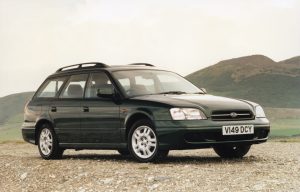Recalls: Subaru BE/BH Liberty
Overview
Manufacturers, or importers, issue recalls for defects or faults which have the potential to cause injury. Generally, manufacturers will inform the original buyers if their vehicle is subject to a recall and of the steps required to remedy the defect or fault. Please note that the recalls below (if any) are for Australian-delivered vehicles only. Furthermore, the number of recalls should not be taken as an indication of a model’s reliability or its safety more generally.
Recalls: Subaru BE/BH Liberty
- In May 1999, a recall was issued for 1998 model year Subaru Liberty vehicles due to a defect in the front seatbelts which could cause the pre-tensioning device not to deploy in an accident or possibly result in a risk of fire in the base of the pillar where the seatbelt retractor assembly is located (PRA 1999/3860). The VINs for the recalled vehicles were as follows:
- Liberty sedan: WG029001 to WG035883; and,
- Liberty wagon: WG03800 to WG050254.
- In August 1999, a recall was issued for Subaru BH Liberty vehicles that were fitted with a Hayman Reese towbar prior to 13 August 1999. For these vehicles, the towbar may have a missing weld which could result in a breakage when towing and cause disengagement from the vehicle (PRA 1999/4047).
- In May 2001, a recall was issued for model year 1999 to 2001 Subaru Liberty models due to potential fuel tank leakages from a cracked seam (PRA 2001/4739).
- In November 2002, a recall was issued for Subaru Liberty models fitted with automatic transmissions and manufactured between June 2001 and July 2002. In these vehicles, the parking pawl mechanism may not restrain the vehicle when parked if the handbrake was not applied correctly. If the vehicle were parked and only restrained by the parking pawl mechanism, it could then roll away and create a potentially dangerous situation (PRA 2002/5824).
Problems and faults: Subaru BE/BH Liberty
Overview
This section identifies potential problems, causes and fixes based on the experiences of owners and repairers, online sources and technical service bulletins. This information is provided solely for reference purposes and AustralianCar.Reviews recommends that only properly qualified persons carry out repairs or modifications. Furthermore, the number of items below should not be taken as an indicator of a model’s reliability or the frequency with which they may occur.
To report a problem or fault to the AustralianCar.Reviews team, please use the Contact Us form. Note that AustralianCar.Reviews does not offer advice on automotive problems or disputes; such enquiries will not receive a reply. For vehicles purchased from dealers after 1 January 2011, please see our Australian Consumer Law fact sheet.
EJ25 head gasket failure
The 2.5-litre EJ25 F4 engine was susceptible to head gasket failure due to:
- An external coolant leak (typically from the left side head gasket); and,
- In rare cases, internal failure of the gasket which allowed coolant into the combustion chamber.
- Symptoms: early signs of head gasket failure include an oily residue in the coolant overflow bottle, or an exhaust/fuel/sulfur smell in the coolant overflow bottle. Beyond this, the coolant temperature gauge may intermittently show higher-than-normal readings, followed by intermittent overheating (particularly during long highway drives). In the case of external leaks, these can be spotted by a visual inspection of the bottom side of the engine with the splash pan removed.
- Prevention: to minimise the risk of head gasket failure, 1) oil and coolant should be changed regularly and in accordance with how the car is used. As such, the scheduled time/kilometre intervals may be inadequate in some cases; and, 2) any corrosion around battery cables should be removed. Corroded battery cables increased ground circuit resistance, thereby increasing the voltage in the cooling system and causing electrolysis; the coolant could also damage the metal head gasket and seals.




